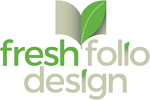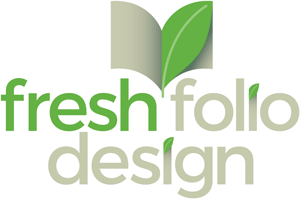 When you’re working in InDesign, there’s virtually no way to avoid dealing with the intersection of copy and images, it’s kind of InDesign’s thing. You can certainly just place the images willy-nilly and let the chips fall where they may. Or, you can use the Text Wrap palette to be intentional about how your copy and shapes interact with each other.
When you’re working in InDesign, there’s virtually no way to avoid dealing with the intersection of copy and images, it’s kind of InDesign’s thing. You can certainly just place the images willy-nilly and let the chips fall where they may. Or, you can use the Text Wrap palette to be intentional about how your copy and shapes interact with each other.
So, with that in mind let’s wrap our minds around (sorry, that will be the only time I do that) what the different wrap options are and how they interact with the copy around them, then at the end, we will take a short dive into a more in-depth piece of the Text Wrap palette for the more “seasoned” designer.
 The Text Wrap Palette
The Text Wrap Palette
You access the Text Wrap Palette by blinking repeatedly at the screen and saying “I can do this” in your best Dracula accent.
If that doesn’t work (you may want to try it several times, but only if you’re alone), then you can either move your mouse to the top Menu bar and navigate to Window>Text Wrap, or press the Command-Option-W (Alt-Control-W for PC users).
As you can see, there are multiple options (1–5 in the graphic) that affect how the copy works with a shape. We’re going to take a little time to explain briefly what each selection does, as well as provide some visual examples.
Let’s start with a text box filled with placeholder text (Lorem Ipsum for the uninitiated) and a lovely pink oval. If you’re trying this on your own (and by all means, please do), make sure that your shape is placed behind the copy (Shift-Command-[) (Shift-Control-[ for PC users), otherwise you’ll just have a shape blocking your copy.
With your shape selected, click on the the “No Text Wrap” option (1). You will see something pretty much like this:

Not too bad, but it isn’t really addressing the wrapping of text. This option simply allows the copy to flow right over and through the shape.
Now, with the shape still selected, click on the “Wrap Around Bounding Box” option (2). You should see the copy flowing around the square bounding box (FYI, it’s ALWAYS a square bounding box!).

This is certainly better than the first option and does integrate the graphic into the flow of the copy a bit better. If you want to take it up another notch (because the proximity of the copy on the right side of the graphic is a bit too close for comfort), look at the Offset area of your Text Wrap Palette (6). With the shape still selected, click on the up-arrow of the top-left field. You should start to see a thin blue line pushing the copy away from the bounding box a bit. Something like this:

The nice thing about this tool is that you can adjust the amount of offset you want to provide (if you’re playing along, try increasing the amount of offset more). If the offset is only appearing on one side of your graphic, that means that the Link icon in the middle of the offset boxes is deselected. Click it and increase the offset again.
The next wrap option in the palette is the “Wrap Around Object Shape” option (3). This option, instead of wrapping around the bounding box (Lame!) will wrap around the shape instead (Cool!). If you select that option, you should see something like this:

Without offset |

With offset |
For your viewing pleasure, we are sharing a sample without, and with, the offset so you can see what a difference it makes with readability to give even just a little bit of offset. Honestly, this is the option that you will most often work with.
The fourth option in the palette is the “Jump Object” selection (4). This one is useful if you want to isolate the graphic or if you happen to have a very horizontal image. Ultimately, using this option is much more effective than putting in extra returns and hoping that nothing shifts.

The fifth option is “Jumped to Next Column” and is similar to “Jump Object”, but kicks the text after the image to the next column or linked text box (whichever applies). Here’s what the application of that option looks like.

The final option to cover in the main area of the Text Wrap Palette is the “Invert” option (7). I honestly don’t believe that we have ever made use of this functionality, but I suppose if you had a section of text that you wanted to highlight within an inline shape, this could be helpful. The “Invert” option would be used in conjunction with the “Wrap Around Object Shape option (you could potentially use it with the “Wrap Around Bounding Box” option, but it would look pretty weird. Try it to see why). The “Invert” option places copy within the shape and then continues it below the bounding box. Here’s an example of what it would look like:

Those are the basic tools options for the Text Wrap Palette and examples of how they work. Try working through the different options and play with the offsets a bit to get a better feel for how they interact with the copy. If you REALLY want to get crazy, click on the Link button in the middle of the offset fields. Then, you can set different offset amounts for different sides of the shape or bounding box.
An Advanced Look
 For those who already knew the basics of the Text Wrap Palette let’s take a closer look at a slightly less used, but still helpful set of options, click on the set of 4 horizontal lines at the top right of the palette (8). When you do that you will see an option window that says “More Options”. Click that selection and you will see an additional set of Wrap Options (1) which can be very helpful.
For those who already knew the basics of the Text Wrap Palette let’s take a closer look at a slightly less used, but still helpful set of options, click on the set of 4 horizontal lines at the top right of the palette (8). When you do that you will see an option window that says “More Options”. Click that selection and you will see an additional set of Wrap Options (1) which can be very helpful.
These particular options only work in conjunction with the “Wrap Around Bounding Box” and “Wrap Around Object Shape options. Here’s a quick breakdown of what each of these options can do for you:
- Right Side — This will keep the text only to the right side of the object offset areas. Sometimes when positioning an object and wrapping text, some copy can stray to both sides of the object, which may look sloppy or unreadable.
- Left Side — This will keep the text only to the left side of the object offset area.
- Both Right Side & Left Sides — This will allow copy to flow to both the right and left sides of the object. This is particularly useful when the object is placed toward the center of the copy.
- Side Towards Spine — This option only applies when you’re dealing with a file that contains spreads (2 facing pages). It will keep the copy on the interior side of the page.
- Side Away from Spine — Read the “Side Towards Spine” description and picture the opposite.
- Largest Area — This is probably the most useful option, and is the one you will choose most often. When this is selected, it will place the copy to the side that contains the most space. Unlike the “Right Side” and “Left Side” options, this one will keep all the copy on a single side of the shape.
To give a better idea about how these options work, we’re going to do a little comparative analysis (we have the best words). Here are examples of how the primary options work.
Full Disclosure: A unnamed designer that I know (name rhymes with Tribecca) often still defaults to the old-school method of adding an empty box to address wrapping issues for drop caps. This comes out of the days when there wasn’t a handy Text Wrap Palette to solve your text wrapping needs. However, this is a much more quick, effective, and accurate way to address wrapping issues.

Both Right & Left Sides |
As you can see, the copy flows around and through the shape. This is the Goofus choice of the design world. | |

Right Side |
We’re getting closer here, but no one is going to want to decipher the copy running through the shape. Eliminating the copy on the left is a better choice though. | |

Largest Area |
This is the best choice of the primary options. It keeps the copy on a single side and doesn’t interfere with the shape. In this case the offset would be increased a little to address the line of text intruding on the right side. | |

Left Side |
If Both Right & Left Sides is the Goofus decision, this is the Clone-of-a-clone decision (if you haven’t seen Multiplicity, address that now!). Obviously, no one would choose this option, but we include it because we are that thorough |
Obviously, as with almost everything InDesign, there is still more functionality we haven’t covered, and at a future date, we’ll come back and dig a little deeper. However, this should provide you with a good overview of the Text Wrap Palette along with the basic tools.
Ultimately, this is what you will be able to do using this tool. Go get a cup of coffee and start practicing!




Leave a Reply